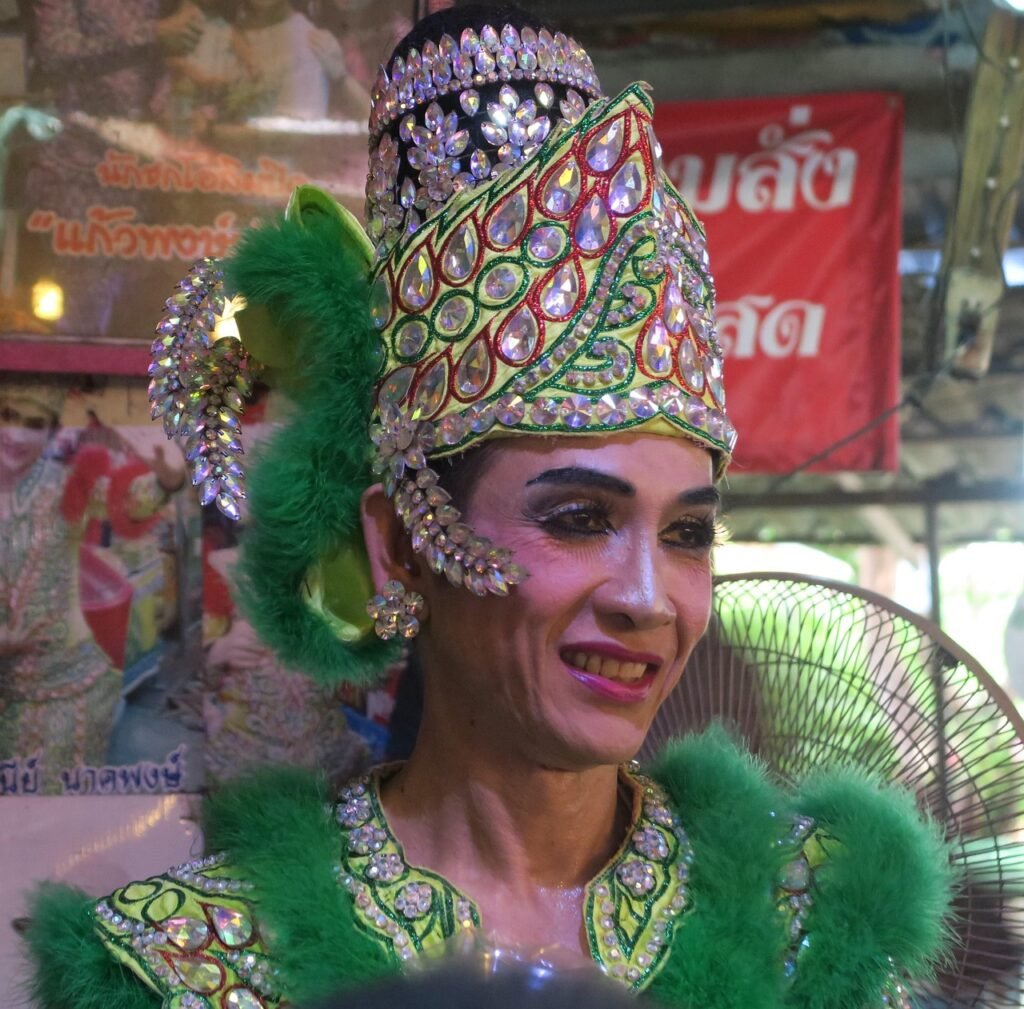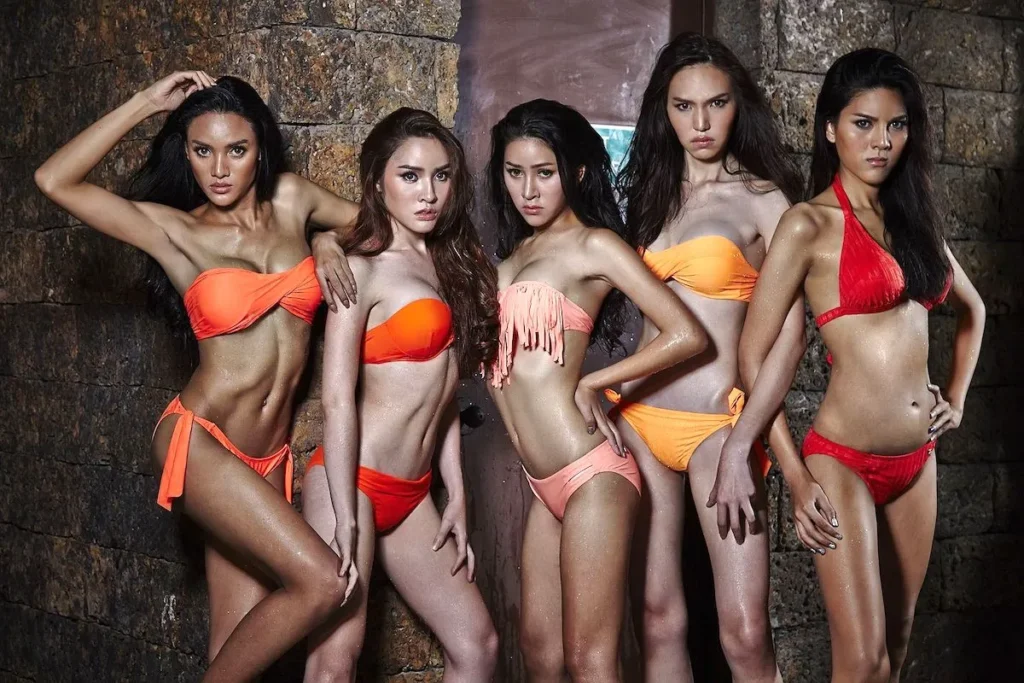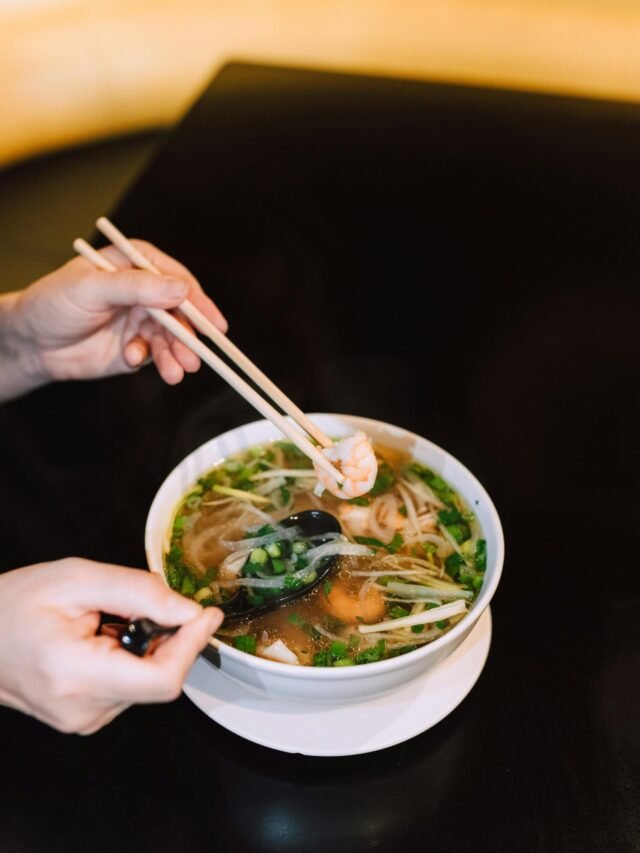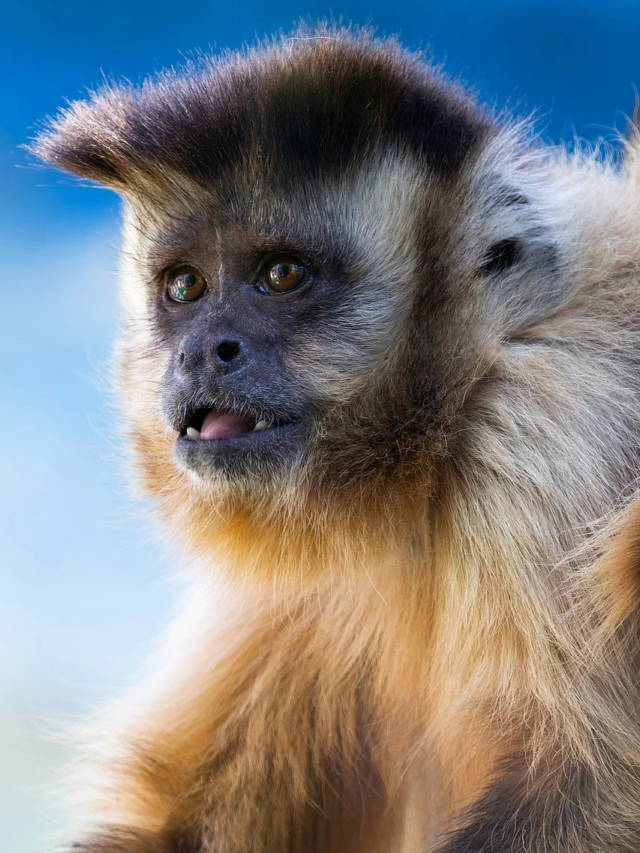
Introduction to Ladyboy Culture
Ladyboy culture in Thailand, known locally as kathoey, plays a significant role in the country’s social and cultural landscape. Traditionally, the term kathoey refers to transgender women or effeminate gay men, who often challenge conventional gender norms. In Thai society, ladyboys are visible figures, frequently appearing in entertainment venues, beauty competitions, and various forms of performance art. This visibility not only highlights their existence but also illustrates the evolving perceptions of gender and sexuality in Thailand.
The kathoey community embodies a unique intersection of traditional gender roles and modern understandings of gender identity. In many ways, ladyboys occupy a distinct niche that allows them to express their identity outside the binary constraints typically associated with gender.
This acceptance reflects Thailand’s broader cultural outlook, where there is a degree of openness towards diversity, particularly in urban centers. The presence of ladyboys in Thai culture has contributed to the perception of Thailand as a more liberal destination regarding sexual and gender identities.
Despite their public visibility and the entertainment roles they often fulfill, challenges persist for ladyboys in everyday life. Many kathoey face stigma and discrimination, affecting their social interactions and employment opportunities. While progress has been made towards greater acceptance, particularly in urban areas, deeply ingrained attitudes can still pose barriers to full societal integration.
As the world continues to evolve regarding issues of gender identity, ladyboy culture in Thailand remains a poignant example of how cultural, historical, and social factors intertwine to create a complex and often misunderstood community.
This exploration of ladyboys reveals the broader spectrum of gender diversity and the ongoing dialogue about acceptance and identity in Thailand.
Historical Roots of Ladyboy Identity

The historical roots of the ladyboy identity in Thailand can be traced back to ancient times when gender fluidity was more widely accepted and integrated into the cultural fabric.
In Thai literature and folklore, references to gender non-conforming individuals are not uncommon. For instance, ancient texts such as the “Ramayana” illustrate characters that defy conventional gender roles, highlighting the long-standing presence of diverse gender expressions in Thai society.
Buddhism, the predominant religion in Thailand, also plays a pivotal role in shaping societal attitudes towards ladyboys. The religion emphasizes the idea of rebirth and the fluidity of identity, allowing for a more flexible interpretation of gender. Monks and Buddhist teachings have historically been more accepting of transgender individuals, often considering them to possess unique spiritual qualities.
This acceptance feeds into the broader cultural recognition of ladyboys as a vital and visible segment of Thai society.
Furthermore, local customs and practices have fostered an environment where gender diversity can be expressed.
For example, traditional Thai festivals often celebrate beauty and artistry, providing platforms for ladyboy performances, where their unique talents are showcased and appreciated. The integration of ladyboys into various cultural practices reinforced their visibility and acceptance throughout history, positioning them as an integral feature of Thai identity.
The evolution of ladyboy identity has been significantly influenced by historical events, including changing political landscapes and societal transformations. In contemporary times, the visibility of ladyboys has further increased thanks to globalization and modern media, allowing for a more nuanced understanding of gender diversity in Thailand.
Despite ongoing challenges, the rich historical context of ladyboys lays a foundation for the culture’s continuing evolution and acceptance in modern Thai society.
Cultural Significance in Thai Society
Recognized for their unique blend of characteristics, ladyboys have permeated traditional performances, especially in cabaret shows, where they are celebrated for their vibrant displays of artistry and flamboyance. These shows not only serve as entertainment but also act as a societal stage that reflects the complexities of gender identity and expression in Thai culture.
In the realm of media, ladyboys have garnered both representation and visibility, appearing in films, television shows, and advertisements.
Their presence provides insight into evolving attitudes towards gender and sexuality, often challenging conventional norms. Popular Thai pop culture frequently incorporates themes related to ladyboys, enabling them to become symbols of resilience and creativity. The intersection of tradition and modernity seen in these performances underscores the dynamic landscape of Thai society, where ladyboys navigate spaces of both acceptance and stigma.
Challenges and Discrimination Faced by Ladyboys
Despite Thailand’s relatively tolerant attitudes towards gender diversity and the visibility of ladyboys, significant challenges and discrimination persist. Ladyboys, or “kathoey,” often encounter stigma based on societal norms that strictly categorize gender. This rigidity can lead to marginalization and a struggle for acceptance in the mainstream society.
Many ladyboys face challenges in areas such as employment, where they are frequently subject to bias and stereotyping, resulting in limited job opportunities. As traditional roles remain deeply ingrained, many employers are hesitant to hire individuals who do not conform to conventional gender expectations.
The entertainment industry has provided some respite for ladyboys through roles in cabaret shows and modeling; however, these positions may not translate to broader societal acceptance.

Oftentimes, the media portrayals of ladyboys can exaggerate stereotypes, further entrenching societal prejudice. Personal experiences shared by many ladyboys reveal that outside the entertainment sector, securing stable employment is fraught with obstacles. For many, their identity leads to a reluctance from employers to offer jobs, limiting their financial independence and contributing to cycles of poverty.
Furthermore, educational institutions where ladyboys hope to seek acceptance often become the first battlegrounds for discrimination. Instances of bullying or exclusion can severely diminish a ladyboy’s educational experience, leading to lower self-esteem and mental health challenges.
The pervasive nature of discrimination can foster a culture of silence among ladyboys, making it difficult for them to seek support or resources. This systemic bias is compounded by the prevailing societal attitudes towards gender nonconformity, which can result in isolation and marginalization.
The ongoing struggle for fairness and acceptance highlights the necessity for continued dialogue and advocacy in order to foster a more inclusive environment for ladyboys in Thai society.
Legal Status and Rights of Ladyboys
The legal framework surrounding the rights of ladyboys in Thailand is complex and often reflects the broader societal attitudes towards gender identity and expression. Historically, ladyboys, or “kathoey,” have occupied a unique space within Thai culture, generally more accepted than in many other countries, yet still facing significant legal challenges.
One of the primary issues is the lack of formal recognition of gender identity in the Thai legal system. Currently, individuals are required to present identification documents that correspond with their biological sex, which has led to complications for ladyboys seeking legal recognition of their gender identity.
Efforts to advance gender recognition rights have been ongoing, led by various advocacy groups that focus on the specific needs of the ladyboy community. These organizations advocate for reforms that would allow individuals to change their legal gender status on identification documents, thereby aligning their legal identity with their gender identity.
Despite these efforts, societal pressure and traditional views continue to impede significant legal reforms.
Discrimination against ladyboys in areas such as employment, healthcare, and education remains prevalent. The Thai Constitution prohibits discrimination based on sex, yet this protection is not always extended to gender identity. This gap in legal safeguards results in various forms of marginalization, which advocacy groups are tirelessly working to address.
The campaign for the legal rights of ladyboys is further complicated by varying degrees of acceptance in different regions of Thailand, often influenced by local cultural and religious beliefs.
While there has been some progress, ongoing advocacy for legal reforms and protections is crucial in ensuring that ladyboys can fully participate in society with dignity and respect. The fight for these rights not only impacts the ladyboy community but also reflects the country’s evolving views on gender identity and human rights.
The Intersection of Tourism and Ladyboy Culture
The relationship between tourism and ladyboy culture in Thailand is a multifaceted phenomenon that has evolved over the years, significantly impacting both the local community and the broader perceptions of gender identity. Ladyboys, known locally as “kathoey,” have become a symbol of Thailand’s vibrant cultural tapestry, attracting numerous tourists drawn by the allure of traditional performances and nightlife entertainment.
However, this increasing interest has led to the commercialization of ladyboy performances, particularly in areas frequented by international visitors.

In tourist hotspots like Bangkok and Pattaya, ladyboy cabaret shows have gained international fame, showcasing elaborate performances that highlight the beauty and artistry of transgender individuals. While this visibility has provided a platform for kathoey to express themselves freely, it has also led to a commodification of their identities.
Critics argue that the focus on entertainment can overshadow the rich cultural heritage of ladyboy culture, reducing it to mere spectacle. This dynamic raises important questions around authenticity and respect for a community that has historically faced marginalization.
In conclusion, the intersection of tourism and ladyboy culture in Thailand presents a complex landscape of opportunities and challenges. While tourism has enhanced visibility for kathoey and contributed to positive cultural exchange, it also raises critical issues of commodification and fetishization that need to be thoughtfully addressed by both the local communities and the tourism industry.
Controversial Representations in Media
The representation of ladyboys in Thai and international media has long been a subject of debate and concern. These portrayals often oscillate between reinforcing stereotypes and challenging societal norms. In Thai culture, ladyboys, known locally as “kathoey,” have been featured in various television shows, films, and advertisements.
These depictions frequently emphasize certain stereotypes, portraying ladyboys as comedic figures or objects of fascination rather than as individuals with complex identities. This narrow focus can perpetuate misunderstandings, reducing their identities to mere entertainment rather than recognizing their cultural significance.
Internationally, films like “The Hangover Part II” and TV shows that include ladyboy characters often rely on humor that, while intended to be lighthearted, can inadvertently contribute to a reductive view of ladyboys and their lived experiences. Such portrayals risk reinforcing existing prejudices and biases, transforming an opportunity for education into a spectacle that prioritizes comic relief over genuine representation.
However, there is a growing counter-narrative, particularly with the rise of social media platforms where ladyboys can share their stories and advocate for their rights. A plethora of ladyboys in Thailand are leveraging platforms such as Instagram and YouTube to express their identities authentically, thereby challenging the stereotypes often depicted in mainstream media.
These individuals are increasingly vocal about their experiences, aiming to reshape public perception and promote a more nuanced understanding of their community. The influence they wield on social media allows for a more personal narrative, one that emphasizes resilience and individuality rather than conformity to traditional stereotypes.
In summary, while media representations of ladyboys continue to perpetuate certain stereotypes, the emergence of social media as a powerful tool for identity expression provides a space for greater recognition and understanding of the complexity of ladyboy culture in Thailand and beyond.
This duality reminds us of the need for more thoughtful and respectful portrayals that honor their diverse experiences.
Personal Stories from the Ladyboy Community


One account from a young ladyboy, who transitioned in her late teens, describes her childhood struggles against societal norms. She recalls the moment she fully embraced her identity, feeling a sense of liberation that had long eluded her.
Through her journey, she faced familial pressure and societal stigma, yet she found resilience in the support of her friends within the community. Her triumph in securing a successful career in fashion illustrates the potential for acceptance and progress in a traditionally conservative society.
Another poignant story emerges from an older kathoey, who has witnessed significant changes in Thai society over the decades. She reflects on the challenges of discrimination in the workplace and the constant battle for recognition and respect.
Her narrative reveals a life marked by both hardship and joy, where moments of acceptance often shone brightly against a backdrop of adversity. This emphasis on perseverance highlights a shared experience within the ladyboy culture— the quest for dignity and community support amid ongoing challenges.
Moreover, these personal stories often reveal a close-knit network among ladyboys, fostering solidarity and camaraderie. Many find strength in shared experiences, leading to advocates for rights and acceptance.
Through their testimonies, these individuals not only challenge stereotypes but also humanize the ladyboy phenomenon, inviting a broader audience to understand their realities. This intersection of personal struggle and community resilience in the face of adversity underscores the rich and diverse narratives that define the ladyboy experience in Thailand.
Future Perspectives: The Evolution of Ladyboy Culture
The future of ladyboy culture in Thailand appears to be on the brink of significant transformation, influenced by changing societal attitudes and legal rights. Historically, ladyboys, or “kathoey,” have occupied a unique position in Thai culture—often celebrated in entertainment yet marginalized in other aspects of life. As discussions surrounding gender identity gain traction globally, it is imperative to consider how these shifts will impact the status of ladyboys in Thai society.
Movements advocating for gender inclusivity are becoming increasingly prominent, driven largely by younger generations who prioritize acceptance and understanding over traditional norms.
The younger population is more exposed to diverse perspectives on gender identity and is likely to challenge longstanding stereotypes associated with ladyboys. This evolution reflects a broader societal shift toward recognizing and supporting various gender expressions, fostering an environment of acceptance that could enhance the rights and visibility of ladyboys.
Moreover, legal reforms are also crucial for equitable treatment. Increased advocacy may lead to changes in legislation that support the rights of ladyboys in accessing healthcare, employment, and legal recognition. Countries worldwide are beginning to adopt more inclusive policies, and Thailand, with its rich cultural history surrounding gender fluidity, may follow suit.
As global standards of human rights evolve, Thailand’s legal framework could become more aligned with these principles, ensuring that ladyboys are afforded the same rights and protections as their cisgender counterparts.
In conclusion, the future of ladyboy culture in Thailand is poised for evolution. As societal attitudes shift, backed by advocacy movements, and supported by legal reforms, a more inclusive environment may emerge.
This transformation could significantly enhance the visibility and acceptance of ladyboys, resulting in a richer tapestry of gender diversity within Thai society. The coming years will be crucial in determining how ladyboy identities are perceived, accepted, and legally protected in Thailand.
Related posts:
- Exploring Ratangarh, Rajasthan: A Gateway to History and Culture
- Romantic Bangkok: 6 Ideas for Couples
- Best Jungle Hiking Pants: The Ultimate Guide for Adventurous Trekkers
- A Complete Guide to Why You Should Try Fine Dining During Your Next Visit to Singapore
- Why Holland is a Must-Visit Country: A Journey Through Nightlife, Culinary Delights, and Iconic Tourist Attractions
- Top 4 Restaurants in Mirissa, Sri Lanka: A Food Lover’s Guide
What's Your Reaction?
One of my friends once said, I am in love with words and a zoned out poser... well, I will keep it the way it has been said! Besides that you can call me a compulsive poet, wanna-be painter and an amateur photographer















